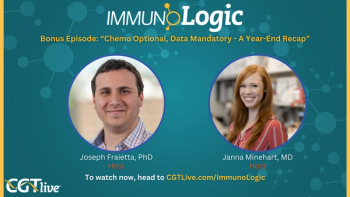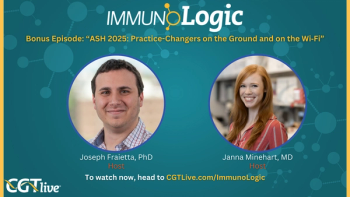
Gene Therapy May Help Address Remaining Unmet Needs in Hypertrophic Cardiomyopathy
Milind Desai, MD, MBA, an investigator on the MyPeak-1 trial and the director of the Hypertrophic Cardiomyopathy Center and the vice chair of the Heart Vascular Thoracic Institute at the Cleveland Clinic, discussed Tenaya Therapeutics’ TN-201.
Prior to the FDA’s approval of the first-in-class small molecule drug mavacamten last year, there were no precision therapies specifically directed at hypertrophic cardiomyopathy (HCM) on the market. Despite this advance, substantial unmet need remains for patients with genetic variants of HCM like MYBPC3-associated HCM, because mavacamten does not address the underlying basis of the disease: a dearth of Myosin Binding Protein-C3 (MyBP-C3), the protein produced by a functional version of the MYBPC3 gene.
Recently,
CGTLive: Can you give an overview of the current state of care for HCM? What unmet needs remain for these patients?
Milind Desai, MD, MBA: I will start by saying HCM is the most commonly studied genetically-mediated cardiomyopathy. Within the context of HCM, the most common genetic mutation that we know of is the MYBPC3 mutation. Essentially, in patients who have this mutation, this is a loss-of-function mutation. The bottom line is the end protein, MyBP-C3, in these patients is only at a 60% or 70% level. Assuming we are normal, it would be at 100% levels in us, but in these individuals, it is only at 60% or 70%. The downstream effect of that is associated with a lot of the pathophysiology of HCM: stiff muscle, thickness of the heart muscle, impaired use of energetics of the heart muscle, and all the downstream ramifications related to that. That's the fundamental root of the problem.
In HCM, until about last year, there was no real specifically developed precision therapy for overall HCM. Mavacamten is the first-in-class that was approved by the FDA last year to treat the full spectrum of obstructive HCM patients. It is not something that is developed specifically for this MYBPC3 mutation. While it is a precision drug that works at the sarcomeric level of HCM, it is not something that has the potential of fixing the genetic abnormality in terms of the loss of protein and its downstream ramifications. As such, until last year or a year before that there were no precision therapies. Then came mavacamten. Now, there is clearly [still] an unmet need: Can we repair the genetic abnormality? Can we potentially cure the disease associated with this genetic mutation? That's where we are headed towards with the conversation.
What is TN-201 and how may it address unmet needs in HCM?
Now we are entering into gene therapy. This is an adenovirus-associated vector-based gene therapy. The bottom line is, we take the naturally occurring adenovirus, its basic genetic material is removed, and a cassette of MYBPC3 gene copy and some associated delivery material—a delivery payload for the lack of a better term—is inserted into this adenovirus. Basically, the concept is that once it is infused through your standard intravenous injection, it then subsequently goes straight to the heart where the DNA cassette is then delivered. It comes out of the virus and triggers a signal to generate RNA, which then triggers a signal to generate the protein. For the lack of a better term, this infusion will top off the missing 30% to 40% of the protein. Then, that is expected to have downstream positive ramifications like improving symptoms, improving functional capacity, reducing stiffness, potentially reducing thickness, etc. The good thing about the design is this specifically goes to the heart and then the excess material is excreted to the liver. It does not go and do anything else that we know of in other organs, in terms of genetic modification, and it does not go into the human genome, so, it is not something that will be transmitted down to your children and the future generation. That's the fundamental thought-process in a nutshell. So, if the concept works, then 1 infusion can potentially cure the disease. That's the holy grail we are after.
This transcript has been edited for clarity.
REFERENCE
Tenaya Therapeutics doses first patient in the MyPeak-1 phase 1b clinical trial of TN-201 for the treatment of MYBPC3-associated hypertrophic cardiomyopathy. News release. Tenaya Therapeutics, Inc. October 5, 2023. Accessed October 5, 2023. https://investors.tenayatherapeutics.com/news-releases/news-release-details/tenaya-therapeutics-doses-first-patient-mypeak-1tm-phase-1b
Newsletter
Stay at the forefront of cutting-edge science with CGT—your direct line to expert insights, breakthrough data, and real-time coverage of the latest advancements in cell and gene therapy.





































